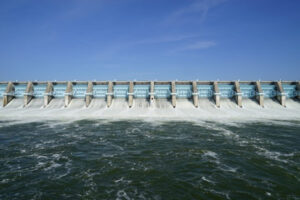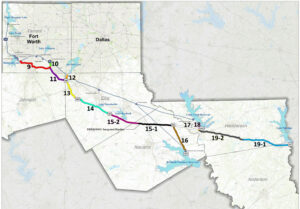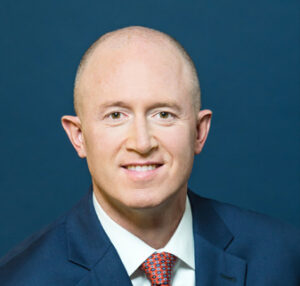The Tarrant Regional Water District (TRWD) uses a system of pipelines and lakes to bring water to more than 2 million people in Fort Worth and surrounding areas. Municipal Water Leader spoke with General Manager Dan Buhman about his agency’s achievements and ethos as it embarks on some $1 billion in capital improvements to provide additional water supply; enhance flood control; and create new wetlands, water reuse, and storage.
Municipal Water Leader: Please tell us about your background and how you came to be in your current position.
Dan Buhman: I spent 15 years as a consultant to water suppliers across the United States, planning for future needs and implementing large infrastructure projects across the nation. During that time, I worked on everything from finding new sources of supply and strategic water planning to river restoration and whitewater design. When I moved to the Fort Worth area, I honed in on strategic water planning as my focus. I joined TRWD about 8 years ago as the assistant general manager. During my time here, I have managed several divisions, and I became general manager last July.
Municipal Water Leader: Please give our readers a brief introduction to TRWD.

Dan Buhman: We are one of the largest water suppliers in the region. We supply raw wholesale water to 2.3 million people in 11 rapidly growing North Texas counties. We also provide vital flood protection for the community. In the 1950s and 1960s, the U.S. Army Corps of Engineers built 30 miles of levees along the Trinity River through Fort Worth, and today we own, operate, and maintain that levee system. We also provide numerous recreational opportunities in and around Fort Worth, including parks, boat ramps, and 100 miles of recreational trails along the West and Clear Forks of the Trinity River and around Marine Creek Lake in northwestern Tarrant County. We also focus on environmental stewardship and have several environmental cleanup projects we are undertaking that make the community a safer place.
TRWD has approximately 350 employees who work throughout our 11‑county service area. Our annual budget is approximately $200 million, and we have a capital improvement program that includes a $1 billion flood control project, a $2.3 billion water supply project, and two wetlands projects that cost several hundred million. We have a lot of capital improvements underway as we try to meet the needs of a rapidly growing region.
Municipal Water Leader: Would you tell us about those capital improvement projects?
Dan Buhman: We have four major projects going on right now. The first is the Integrated Pipeline Project, which is jointly supported by Dallas Water Utilities and TRWD. Together, we are building 150 miles of pipeline to move water from three East Texas reservoirs into the Dallas– Fort Worth Metroplex. TRWD’s sections are operational and are delivering water to our customers, and Dallas’s section is currently being built. This collaborative approach will benefit both suppliers and will have the ability to provide our customers an additional 350 million gallons a day.
Another large project we are involved in is the Panther Island/Central City Flood Project. It is a more than $1 billion flood control project along the levee system we maintain in Fort Worth. The levees were built in the 1950s and 1960s to protect a population of 350,000 people from a larger-than-500‑year storm. Since that time, we’ve grown to a population of nearly 1 million. With that comes a lot of concrete, so the levees no longer protect us at the same levels as before. This project will bring us back to that original level of protection.
In January, we reached a significant milestone for that project and the community: We were appropriated $403 million from the Infrastructure Investment and Jobs Act to build a bypass channel that will allow flood waters to be moved through the levee system more efficiently. This will restore vital flood protection to 2,400 acres of neighborhoods.
We also just awarded a contract to design another 2,000 acres of wetlands, complementing our existing 2,200‑acre wetlands facility near Richland-Chambers Lake. The new wetlands at Cedar Creek Lake increase the amount of reuse water in the district’s water supply.
The last project I would like to highlight is our aquifer storage and recovery project. We have designed it and are ready to begin construction, but we’ve paused the project because of the global supply chain and construction cost pressures. We don’t have an immediate need for it, so we’ve put it on pause to reassess when the right time is to build. Those are four of our biggest initiatives.
Municipal Water Leader: Is there a completion date for each of those projects?
Dan Buhman: We expect the new wetlands project to be built and delivering additional water supplies by 2035. The Integrated Pipeline Project is already providing water to TRWD’s customers and will be connected to Dallas by 2027. The U.S. Army Corps of Engineers estimates that the Panther Island/Central City Flood Project’s bypass channel will take 6 years to construct.
Municipal Water Leader: It seems that especially with the wetlands project, there is a dual purpose of creating water supply and environmental stewardship. What are the best ways to balance those two aims?

Dan Buhman: We see environmental stewardship as part of our mission. Although we build heavy civil infrastructure, we try to do it in a way that is balanced with the ecosystem that we rely on to supply our customers. We do everything possible to avoid environmental impacts, not just to mitigate them when they’re impossible to avoid. We take part in programs like Envision, which is like a LEED certification for civil infrastructure. As we go through that certification process, we can ensure we are building infrastructure in the most sustainable way. We try to be the best stewards of our existing resources, which is why we put such an emphasis on conservation and reuse. The wetlands project is one example. Let’s use what we already have to the best of our ability, and let’s do it in a way that uses green infrastructure. Aquifer storage and recovery is another example. It’s taking a resource we already have and trying to use it in the most efficient way possible. We store the water underground, where it doesn’t evaporate and where it doesn’t require additional surface acreage. Though we will need additional reservoirs as part of our water supply portfolio in the future, we do these other things to make sure that our portfolio is as environmentally sustainable as it can be. We also do a lot to decrease our energy usage. We pump a lot of water, so we try to make our pumping system as efficient as possible. We even have a hydroelectric facility that recovers some of that electricity. We have a mindset that environmental sustainability should be woven into everything we do.
Municipal Water Leader: You’ve had a significant career, both within the district and outside it. What past experiences helped you most to take on the role of general manager?
Dan Buhman: I would say that my leadership experience— leading large civil projects, leading different divisions at the water district, serving as project manager for large projects— led me to this role. To me, it’s about leadership principles. The role of the general manager is not to be the technical expert. It’s not to be the communications expert. It’s to be a leadership expert—to empower the people I work with to be the best versions of themselves, to do their best work, and to go home at night feeling that they have done something of value. Good leadership has effects throughout society.
A big part of my role is to bring people together to accomplish incredible things. The community and staff have to be on board, and the board of directors has to be supportive. So much of what I do is bringing those people together to a common vision, then making sure that we have the resources to achieve it.
Municipal Water Leader: One of the things you mentioned was getting the public’s buy-in. How does the district do that?
Dan Buhman: We communicate our message through news outlets, social media, and newsletters—not just when we need people’s support, but all the time. We know that the vast majority of people don’t follow our work every day, but there will come a time when they might. If something affects their lives or if there is a major drought or flood, then they say, “What’s the water district doing?” We have been pushing out our message all the time so people can see what we’re doing. On an individual level, I spend a significant portion of my time meeting one-on-one with community leaders, speaking to groups both large and small. And it’s not just me: Lots of people on our staff speak to groups. We’re always willing to be transparent and to explain what we do. We give people our personal time to really help them understand what it is we’re trying to accomplish and why it is so important. We want to help them see that our focus is not inward. Our focus is: How can we make this community an incredible place to live? How can we make the quality of life here great? That’s our entire point, and that happens one-on-one in these breakfasts and lunches and speeches where people really get to connect with us.
Municipal Water Leader: What is your message to Congress and the Texas Legislature?

additional 350 million gallons of water a day. TRWD’s sections are already operational, delivering water to its customers. Dallas’s connection
to Lake Palestine will be complete within the next few years.
Dan Buhman: First, we’re focused on being fiscally responsible. We want to make sure we do what’s right with the money entrusted to us by the taxpayers and rate payers. We always want to be a partner in helping provide solutions to the legislature, whether to control flooding or to provide water supply and recreational opportunities. We are a part of many national organizations and state associations, so we stay aware of what’s happening and what solutions are needed.
Municipal Water Leader: What are the district’s biggest challenges?
Dan Buhman: Developing new projects is harder every year, because the risks—both regulatory and financial—keep increasing. That means we have to be thinking even further in advance. Maintaining our existing system as well as we can is a part of reducing risk. We do quite a bit of that through asset management. There are significant pressures that make developing anything new—water supply, flood control, and so on—more difficult every year. We will continue to advocate for more certainty and speed in the regulatory process.
Municipal Water Leader: What is your vision for the future of the district?
Dan Buhman: My vision for the future is that we continue to be an integral part of enriching our community. The water district will do that by focusing on our core missions: water supply, flood control, recreation, and environmental stewardship. I think we are good at looking ahead and taking the risks we need to take to make sure we have enough water. The fact that the population in our service area is expected to double in the next 50 years is always going to be a driver for us. And all that comes down to a community that supports what we do. We are good partners with other water supply agencies and with our customers, including the Cities of Fort Worth, Arlington, and Mansfield and the Trinity River Authority. It is important to me that we have good partnerships; that’s how we’re going to succeed as we take on these significant challenges. We’re also going to continue to invest in our employees to make sure that they have the resources they need. TRWD will continue making our community a great place to live and work.
Dan Buhman is the general manager of the Tarrant Regional Water District. For more on TRWD, visit trwd.com.

